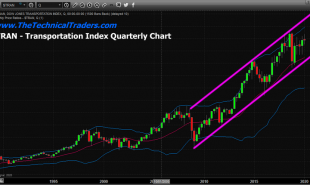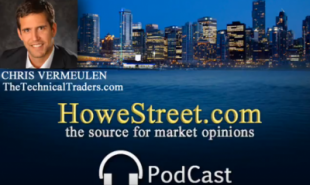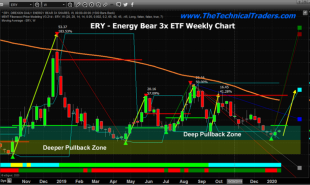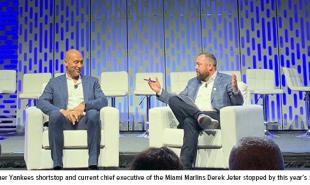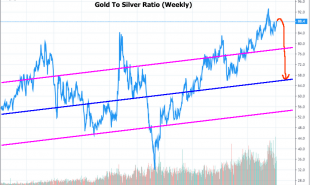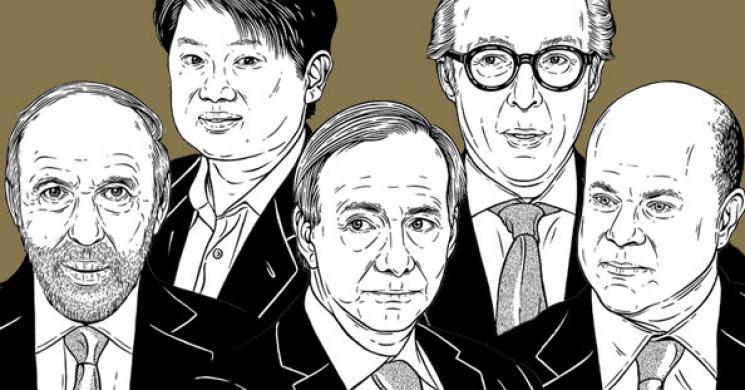
The 2017 Rich List of the World’s Top-Earning Hedge Fund Managers
It seems that 2016 was the year investors — and everyone else — finally fell out of love with hedge funds. Pundits raged against funds that charged high fees while delivering mediocre performance; politicians, including both presidential candidates, derided hedge funds on the campaign trail; and some big pension plans pulled their money, declaring they'd finally had enough.
As a result, blue-chip hedge fund managers who once turned people away had to cut their famously high fees to keep the investors they had. Even that didn't work: In 2016 hedge funds faced their third-ever year of net redemptions, with outflows of $70 billion, according to data tracker Hedge Fund Research.
The bad times trickled down to this year's Rich List. The 25 hedge fund managers who earned the most money last year made a combined $11 billion. Although that sounds like a lot, it's actually the lowest total since 2005, when the top 25 earned just $9.4 billion. And it's only a little more than half of what the top 25 managers earned just three years ago, when they reaped a total of $21.2 billion. Even in 2008, when the stock market and many hedge funds were down by large-double-digit percentages, the highest earners made more money as a group: $11.6 billion. To qualify for the top 25 this year, managers needed to earn just $130 million, the lowest floor since 2011, when a manager required $100 million to make the list. The average top earner made $440 million in 2016. The median earner made $250 million, the lowest since 2011, when the median earner made $235 million. Last year's comparatively lower numbers underscore the dichotomy of the hedge fund industry in 2016. Though data scorekeepers like HFR talked up the fact that the average hedge fund had its best year since 2013, that does not accurately portray what really happened on a fund-by-fund level.
Rather, there was a group of managers that enjoyed strong double-digit gains last year. Many of them are represented on Alpha's 16th annual Rich List. However, looking beyond this top-performing group reveals that a significant proportion of the largest hedge fund firms — those whose principals are more likely to make the most money — either suffered small losses or eked out low-single-digit gains. These kind of results make it difficult for them to earn meaningful sums on their own capital in the funds — one of two key components Alpha uses to measure an individual's annual personal earnings.

We also calculate managers' shares of their firms' fees, and these illustrate why performance doesn't matter as much as it used to. Many of the largest firms still generate huge revenues from fees that far exceed their costs, allowing some managers to qualify for the Rich List. Nearly half of the 25 highest earners in 2016 posted single-digit gains in their main funds. This explains why many of the top numbers are lower than usual and why the minimum required to make the Second Team is "just" $30 million.
Over the 16 years of the Rich List, hedge fund managers in the ranking have made a total of $203.6 billion. This includes 30 people who were ranked in the first year, when a manager needed to earn just $20 million to appear, and 26 people in 2005 because of a tie for 25th place.
Last year just two individuals cracked the billion-dollar mark: James Simons of Renaissance Technologies headed the ranking with $1.6 billion, followed by Raymond Dalio of Bridgewater Associates, who earned $1.4 billion. The previous year four people made more than $1 billion. Simons, whose two main funds posted double-digit gains in 2016, is the only individual to qualify for the Rich List in all of the 16 years since we launched our ranking. Dalio, meanwhile, runs the world's largest hedge fund firm, with about $160 billion in total assets. Last year Bridgewater's Pure Alpha funds, which account for a majority of the firm's hedge fund assets, were up in the low single digits, while its risk parity fund, All Weather, rose 11.6 percent.
After the top two earners, the ranking amounts drop considerably: The third and fourth earners — Two Sigma founders John Overdeck and David Siegel — each made $750 million. Last year their Compass Fund rose by double digits. Continuing a trend from the previous year, quantitatively focused firms, so called because they mostly or totally rely on computers to make their investment decisions, were among the big winners in 2016. The four highest earners on this year's ranking hail from quant firms.
Altogether 13 managers from last year's Rich List are among the top 25 earners this year; several of them qualified even though they posted their worst results in several years. They include Kenneth Griffin of Citadel, the top earner in last year's ranking, who slips to sixth place after his total earnings fell by about 65 percent. In 2016, Citadel's main multistrategy funds, Wellington and Kensington, rose a little more than 5 percent, their smallest gain in eight years.
Of those who qualified for last year's top ranking but missed out this year, four are from firms headed by so-called Tiger Cubs that lost money on their long-short funds in 2016. They are Chase Coleman of Tiger Global Management, O. Andreas Halvorsen and Daniel Sundheim of Viking Global Investors, and Stephen Mandel Jr. of Lone Pine Capital. As a result, this is the first time since 2010 that no one with ties to Julian Robertson Jr.'sTiger Management Corp. qualified for the top 25 ranking. However, thanks to gains on his long-only fund and fees in general, Mandel qualified for the Second Team this year.
Three others who were on the main list last year slip to the Second Team this year because they only posted low-single-digit gains in key funds: Joseph Edelman of Perceptive Advisors and Paul Marshall and Ian Wace of Marshall Wace.
Read more by Soren K.Group


